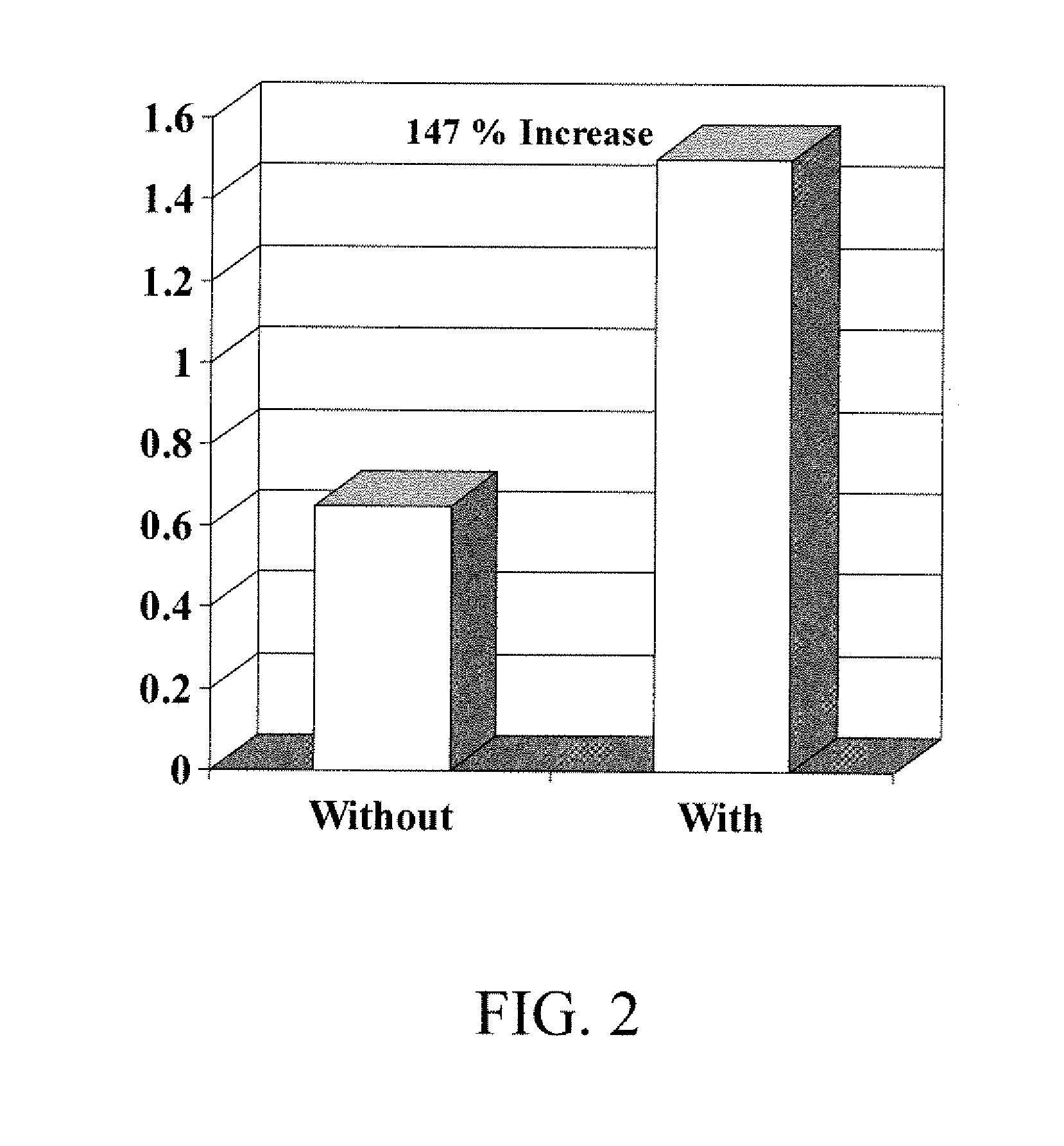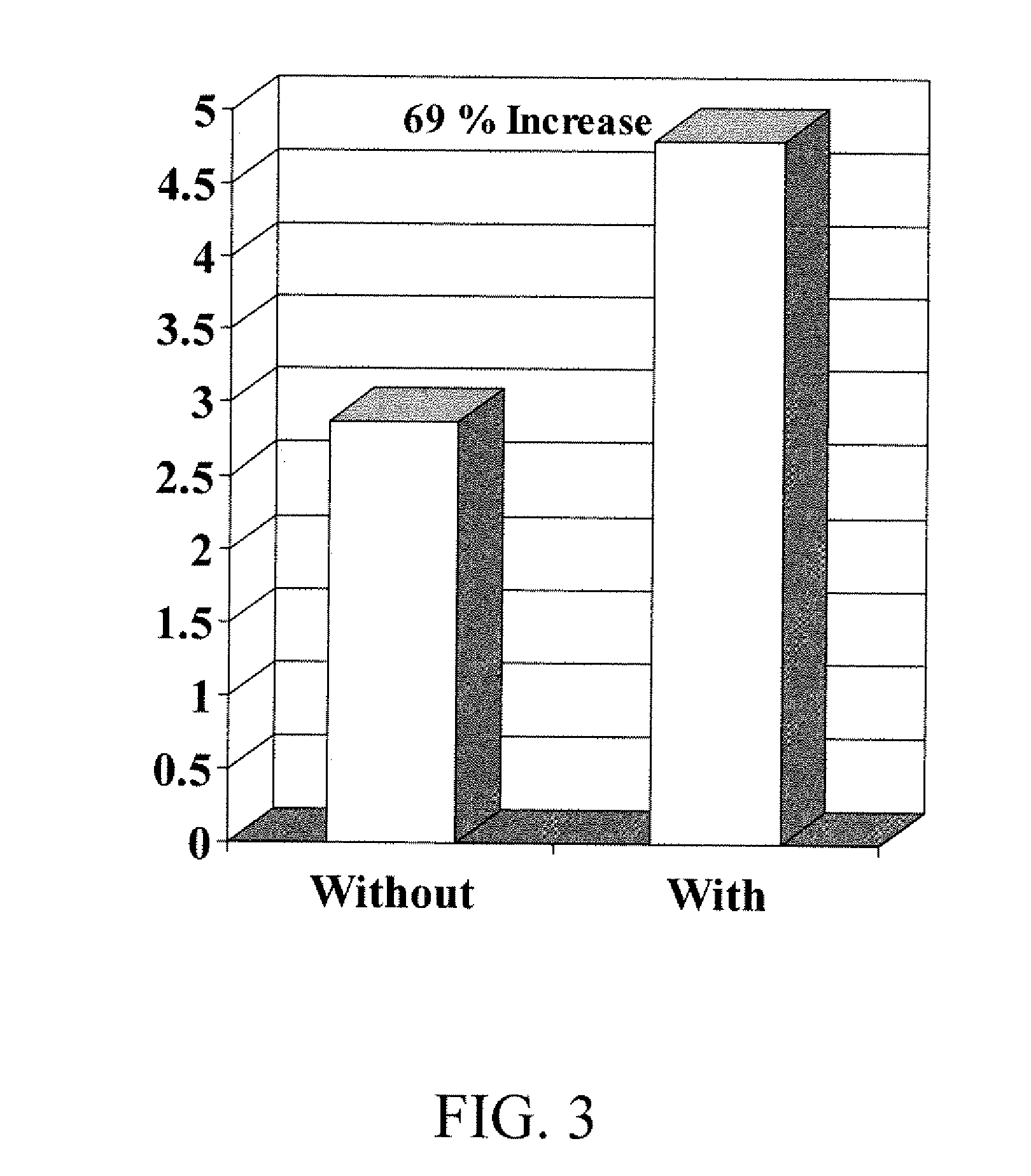Compositions and methods for attracting noctuid moths
a technology of noctuid moths and moths, which is applied in the field of noctuid moths, can solve the problems of human toxicity, reluctance to use any pesticide on agricultural products, and deregistration of many pesticides
- Summary
- Abstract
- Description
- Claims
- Application Information
AI Technical Summary
Benefits of technology
Problems solved by technology
Method used
Image
Examples
example 1
Heliothis virescens Response to a Pheromone Synergist
[0042]An experiment was carried out near Monticello, Drew County in Arkansas to study the response of tobacco bud worm, Heliothis virescens to a pheromone synergist. The experiment was carried out in a habitat of cotton and soybean. β-caryophyllene was used as a synergist with a mixture of pheromones (Z,E)-9,12-tetradecadien-1-ol acetate and (Z)-9-tetradecen-1-ol acetate at the ratio of 7:3. Tedders traps were used in the experiment. Each pheromone trap was baited with the pheromone mixture and approximately 3-6 mg of 3-caryophyllene and each control trap was baited with the pheromone mixture. The control trap contained no β-caryophyllene or other synergists. The pheromone mixture used in the experiment was LURETAPE® obtained from Hereon Environmental in Emigsville, Pa. The trapped adult insects of Heliothis virescens were collected on a daily basis and the total number of trapped insects was counted. Statistical analysis was done...
example 2
Spodoptera exigua Response to a Pheromone Synergist
[0046]An experiment was carried out in three locations in Arkansas to study the response of beet army worm, Spodoptera exigua, in a cotton field to a pheromone synergist. The locations were near Fayetteville, Washington County, near Tillar, Drew County, and near Foreman, Little River County. β-caryophyllene was used as a synergist with (Z)-11-hexadecen-1-ol, a pheromone for Spodoptera exigua. Tedders traps were used in the experiment. Each pheromone trap was baited with (Z)-11-hexadecen-1-ol and approximately 3-6 mg of β-caryophyllene and each control trap was baited with (Z)-11-hexadecen-1-ol. The control trap contained no β-caryophyllene or other synergists. The trapped adult insects of Spodoptera exigua were collected on a daily basis and the total number of trapped insects was counted. Statistical analysis was done using the Least Squares means separation from the SAS GLM procedure.
[0047]FIG. 3 illustrates the average number of ...
PUM
 Login to View More
Login to View More Abstract
Description
Claims
Application Information
 Login to View More
Login to View More - R&D
- Intellectual Property
- Life Sciences
- Materials
- Tech Scout
- Unparalleled Data Quality
- Higher Quality Content
- 60% Fewer Hallucinations
Browse by: Latest US Patents, China's latest patents, Technical Efficacy Thesaurus, Application Domain, Technology Topic, Popular Technical Reports.
© 2025 PatSnap. All rights reserved.Legal|Privacy policy|Modern Slavery Act Transparency Statement|Sitemap|About US| Contact US: help@patsnap.com



